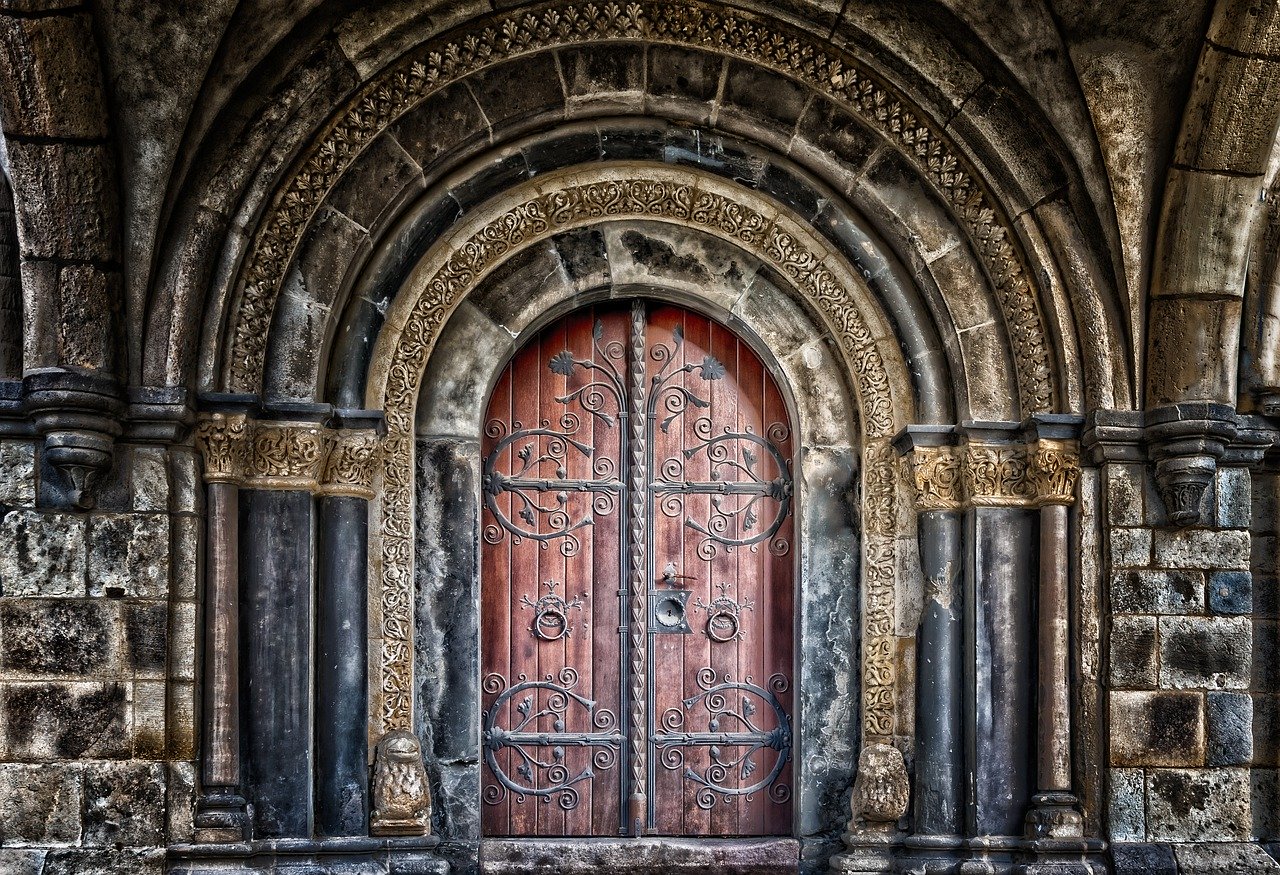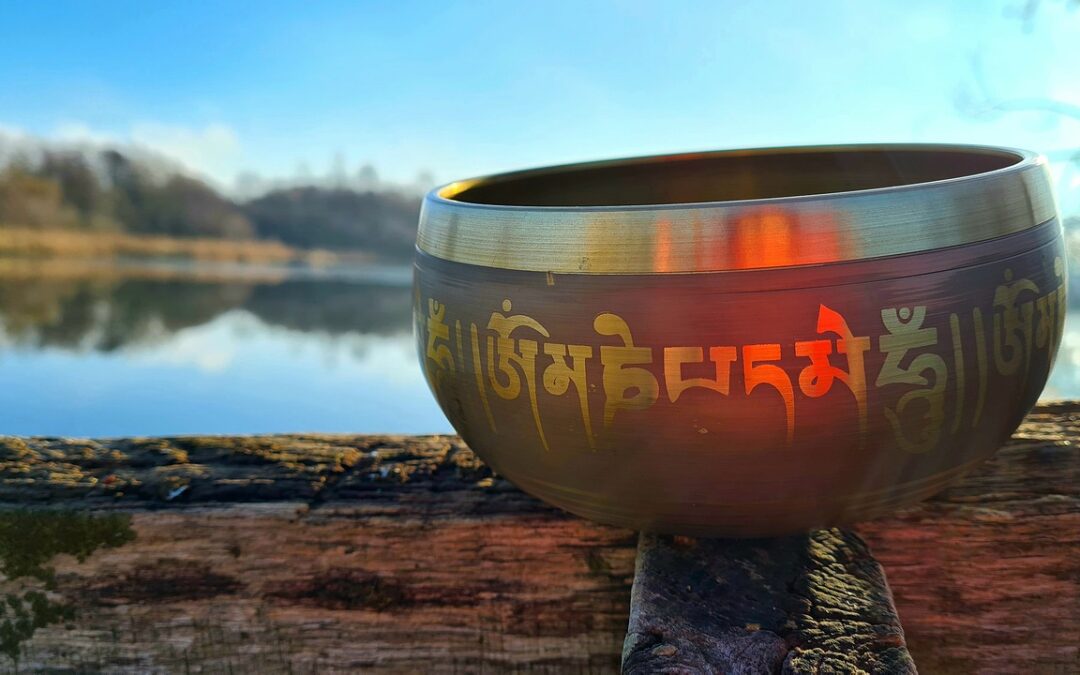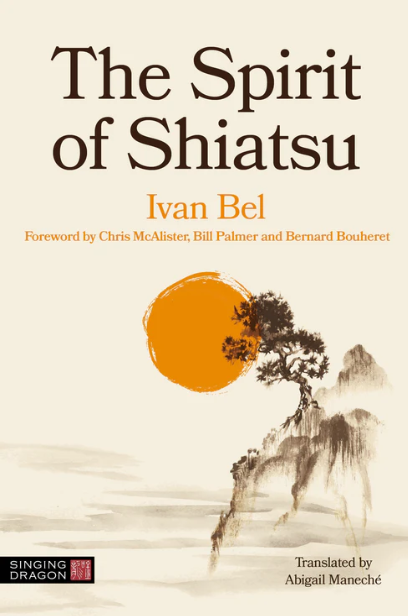The “Gate” points are generally known to Shiatsu practitioners, but they are not perceived as forming a therapeutic family by themselves. This is an omission, because these points can be of great interest to all practitioners. Let’s rediscover those exciting group of points!
The “Gate” points are said to be the opener or closer of the energy flow between the inner and outer layers of the body. In Chinese terms, this is known as the management of the energy inflows and outflows. It is too hasty to only think that the energy flow follows the longitudinal pattern of the meridians as they indeed follows 8 routes: up and down, right and left, front and back, inwards and outwards. But does the Qi stops at the skin layer? No, far from it.
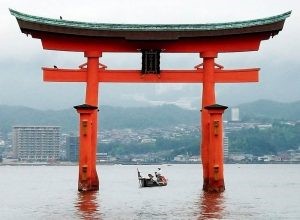
The inside energy is connected to nature and therefore naturally continues its way to everything surrounding it. In return, the energy of our environment impregnate the body. Think of the effects of sunbathing or a walk in the forest and you will easily understand that nature has a constant influence on our body. The role of the gate points is to allow this interconnectedness between the inside and the outside, thus binding the individual to the world.
How a door point functions
The purpose of a door is to open and close at the right time. In other words, it must allow you to open it when you want to go home and close it when you leave. The same will apply for the energy body. When the energy around you is pleasant and resonates positively with your own, the “Gate” points must be opened to let this energy flows in. When the surrounding is unpleasant, or even downright harmful, it is better for the “Gate” points to be closed as to avoid pernicious effects. Just take two minutes to imagine what the energy is alike close to an open dump, a chemical factory, a war zone, or even an unhealthy family atmosphere…. you will understand how harmful this energy can be for your body and psyche. Moreover, when this type of energy enters the body, we often notice shivers, a body that closes himself (crossed arms) and the person says that he or she does not feel well, which demonstrates that we are entirely sensitive to energetic influences that are harmful to us.
On the other hand, if the door stays closed when you want to go back home, and refuses to open when you want to leave, this is definitely annoying to say the least. And if it still stays opens when you have already returned home, it is also of a concern as everyone will be able to enter your abode. In short, in all cases where the door does not fulfil its purpose, you should call in for a locksmith. For the energy body, if the door points refuse to open when you could be receiving positive and nourishing vibes, you are missing an opportunity to do yourself good. The opposite occurs as well when you allow a negative energy to be present when you are not in a good space; this can lead to all sorts of disorders. The locksmith is then called “shiatsushi” or “acupuncturist”, and in both cases his job will be to restore the accurate functional aperture/closure of these points.
Use of Gate points
Because they are interfacing with the outside thanks to their opening/closing abilities, the “Gate” points are also very sensitive to climate stress, especially in case of dysfunction. The Chinese reinforce them to prevent the assault of rain, cold, heat, but especially against the Pathogenic Wind whose effects they always fear. Therefore an immediate benefit is achieved by stimulating the “Gate” points, especially during the inter-seasons. The “Gate” points are not only the sanctuaries where the inside meridian energy will encounter the outside energy that encompass us, they also appeal to us about relationships and communication.
This is particularly relevant when the “Heart/Spirit Gate” point, the famous Shenmen (or Shinmon in Japanese) is obstructed. The stagnant energy at this point no longer allows the mind to correctly grasp (i.e., think clearly) its surroundings and thus to interact with it accordingly (i.e., in a proper and correct timing). Interconnection (in a common way) enables a state to being “into the relationship” reciprocally, which includes such notions like observing, keeping the appropriate distance, interpreting properly and many other principles of our psychology. In order to understand this, we need to know that the points Men (in Chinese) or Mon (in Japanese) are written 門. This character represents a gateway, a passageway, with two doors side by side, similar to the swing door used in the good old western movies. This character is used as the core key to forming many very meaningful words, such as 閃 (shǎn, man who briefly sticks his head around the door to look at; spy) or 間 ( jiān, sun peeking through the door; interstice; space). This is exactly the feeling that we find when we work on this family of points: we enable a space so that the human being can observe and exchange, even briefly, with his environment, or allow him to take a step back from his problems.
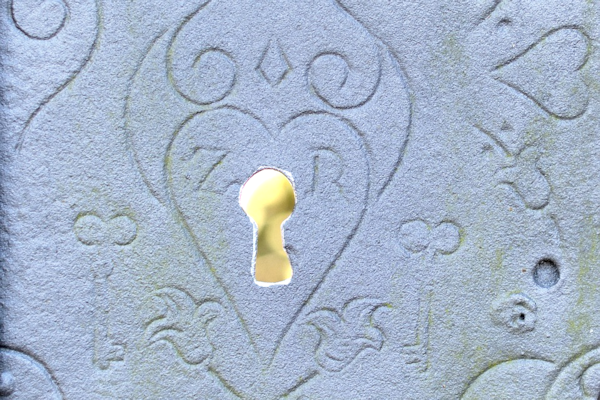
Allowing an individual to reconnect with his or her environment is very helpful when the individual has cut himself or herself off from the world or from his or her family ties. There are many reasons to this: depression, drugs, unheard and unspoken adolescent crisis, family and/or personal traumas, overwhelming work on one’s life, emotional fatigue and tension, working under constant stress in a difficult environment, etc. From clinical experience, these points are to be used to freean individual from a situation in which he or she is stuck, which by the way could lead to possible back fires emotional surges. This is why it is better to handle the ‘Gate” points related to the meridians that are affected. Treatment of all 22 gateway points in one session is like kicking your way in. From my experience, side effects for such healing have always been tough on the receiver, but they proved to be life-saving. Not only you need to have a good reason should you wish to use them all at the same time and to warn the patients about possible Menken effects (treatment backlashes), but as well get their full consent before taking this path. This is why it is more appropriate to partially use these points.
Distribution of the Gate points
Except for two of them- the Large Intestine and the Small Intestine-, all meridians have Gate points. Since these two organs are considered to be already gateways opening outwards (via the anus), they do not require therefore further openings, even energetic ones. This also implies that both intestines are directly sensitive to what is happening on the outside.
This is typically the case when we experience “gut feeling” or when we catch a serious cold snap in our stomach. In both cases the symptom appears immediately, without going through different stages as it is usually the case[i].
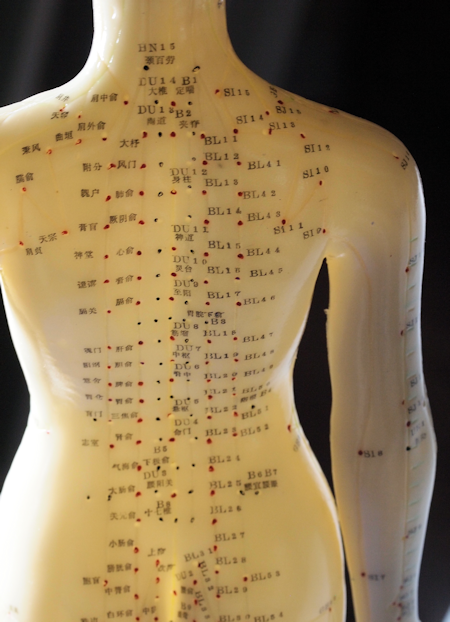
It should also be brought to our attention that some meridians have many “Gate” points while others have only one. For instance, three are located on the Stomach meridian (which make it therefore highly sensitive to its environment) and up to five on the Bladder, this large meridian which communicates very effectively to the body organs (via the Transporting Shu points on the back), the upper and lower body, the physiologic side and the psyche (via its two separate track on the back). The Bladder meridian is above all a transmitting meridian as it also feels its surrounding.
We also need to emphasis the role of the “Gate” points in the energy cycle of the 12 meridians, since Lung 2 (Cloud Gate) marks (close to a point) the start of the great distribution of the Qi in a 24-hour cycle, which will end at Liver 13 (Gate of the System) and Liver 14 (Gate of Hope or Cycle Gate), the last two points in the cycle. Otherwise stated, we can consider that the beginning and the ending of the Qi flow of the 12 meridians are made as a result of exchanges between the internal Qi and the external Qi, thus linking the human being to a wider space which goes above and beyond his own body.
Summary of Gate points
- Lung: LU2
- Stomach: ST21, ST22, ST24
- Spleen-Pancreas: SP11,SP12
- Heart: HT7
- Urinary Bladder: BL12, BL37, BL47, BL51, BL63
- Kidney: KI21
- Pericardium Meridian: PC4
- Triple Heater: TH2, TH21
- Gallbladder: GB25
- Liver: LR13, LR14
- Conception Vessel: CV5
- Governor Vessel: GV4 and GV15
Lu2: Cloud Gate (Yunmen)
Information: Point in the lung apex, where Kong Qi (air energy) mixes with Gu Qi (food energy).
Function: regulates Lung Qi, dissipates sadness, ease the energy circulation in the meridian, and treats numbness in the arm.
ST21 : Beam Gate (Liangmen)
Information: This is the stomach barrier, therefore an obstruction due to food (the word Liang comes from Liangshi which means food) which closes the transit. It dissolves the stagnancy of cereals, leguminous plants and fruits.
Function: regulates the energy of the Stomach, releases fullness, eliminates Tan, treats pylorus’ spasms, ease the food descend, Qi, Humidity and mucus.
ST22 : Pass Gate (Guanmen)
Information: Guan represents a wooden bar that closes a door, so it is the sense of obstruction that predominates here, whereas the door must allow free access.
Function: treats the emptiness of the Stomach and the Spleen, harmonises the Yangming (E-GI), treats oedema because “the Kidneys are the door to the Stomach”.
ST24: Slippery Flesh Gate (Huaroumen)
Information: also has the name Huayoumen, or Gate of the smooth pylorus. This point refers to the Small Intestine which is flabby in consistency and smooth or slippery in appearance. This point is the passageway between the Stomach and the Small Intestine. It is 2 cun across from Shuifen whose role is the separation of the pure from the impure. Because of its function, its relationship to digestion and flesh, it is considered to be the gateway to the Earth element. It disperses the stagnation of meat and fat.
Function: Opens the pylorus, regulates the stomach, purges the large intestine and treats madness
SP11: Winnover/Winnowing Gate (Jimen)
Information: In the leg, each joint is potentially a barrier, an area that serves to block the progression of a disease (see the flow theory of the 5 ancient Shu points). This point is therefore the last stand before the hip and the access to the organs. It therefore serves as a filter.
Function: strengthens the Spleen, eliminates dampness, treats the groin ganglion
SP12 : Rushing/Surging Gate (Chongmen)
Information: Its name comes from the distinct femoral artery’s beats. Its name Surging Gate indicates that it opens the passage of Qi to the upper body. Another name is “Gate of the Crossroads” because it belongs to both Yin Wei Mai (Yin Connecting Vessel) and Jue Yin (Heart-Liver Master).
Function: regulates and strengthens Middle Warming Qi, improves flow between upper and lower body, cools heat/humidity, regulates Qi functions, treats Shan
HT7: Spirit or Heart Gate (Shenmen)
Information: Shu-river point of the Heart, Source point of the Heart, Earth point of the 5 ancient Shu of the Heart, Son (Earth) point of the Heart (Fire)
In the Suwen it is also called “Palace of Luminous Radiance”. Shen can have two meanings: mind linked to thought or vitality linked to Yang. Great treatment point for the head when it is too full of thoughts and in all psycho-emotional disorders in general.
Function: tones up Heart Qi, calms the Spirit, tones up Blood which calms Shen, disperses Heart fire, opens orifices, promotes sleep, treats epilepsy, stops seminal loss, alleviates loss of memory, treats menstruation when disturbed by emotions.
BL12: Wind Gate (Fengmen)
Information: Also a crossing point with the Governor’s Ship. Also known as the “Heat Palace” for its action against Heat. Its geographical position makes it sensitive to the Wind, which will particularly affect the Lungs (it is just above V13, the Shu point on the back of the Lung) and weaken the Taiyang (Bladder-LI).
Function: frees the surface, drives out Wind, Cold, Dampness and Heat, eliminates the invasion of External Wind for nose and throat problems
BL37 : Gate of abundance (Yinmen)
Information: Also known as the “Purple Gate” and the “Gate of Abundance”, this point strengthens the power of the back. It mobilises the whole body in all directions, like a dancer. Its Yin character means “dancer who swings weapons in a ritual dance”, hence its action on mobility.
Function: strengthens the back (muscles and tendons),
BL47: Hun Gate or Gate of the ethereal soul (Hunmen)
Information: The Hun is linked to the original Yang. It allows the Shen of Man to resonate with the Shen of the Universe. This point is therefore a great point of communication between the Universe and Man.
Function: regulates the Liver, treats the chest and the sides, activates imagination, creation, communication, allows one to open up to the world and to exchange one’s vital dynamism, enthusiasm and feelings with others, reactivates the life impulses.
BL51: Vitals Gate / Huang Gate (Huangmen)
Information: This point touches the diaphragm, the membranes, especially the fatty membranes of the abdomen, the fascias… These tissues are energetically connected to the Triple Heater. It is said in the Nei Jing that “in the interior of the body [the TH] encompasses all the innards; it is the ‘great entrails’ of the thoraco-abdominal cavity”.
Function: regulates the Stomach and Large Intestine, brings down and dissolves the accumulation of food, dissolves lumps, treats the feeling of “heartsickness”.
BL63: Precious Metal or Golden Gate (Jinmen)
Information: Crevice point or pile point (Xi). Starting point of the Yang Wei Mai. This point also has other names such as the “Bridge of the Passes” and the “Passing Bridge”, both of which indicate that this point allows one to pass and span to directly access another bank. If it is “precious” or “golden”, it is because it is the starting point of Yang Wei Mai (Yang connecting vessel) and treats epilepsy. It is therefore a precious gateway to the spirit.
Function: disperses Heat, opens orifices, calms Shen, treats epilepsy and convulsions, cystitis and abdominal pain.
KI21: Pyloric or Dark Gate (Youmen)
Information: Crossing point with the Penetrating Vessel (Chong Mai). This point has a long list of nicknames such as “silent, obscure, narrow, tenuous, solitary, deep, subtle door”… These names call forth the idea of a difficult passage where “one must die to the smaller self in order to be reborn to the greater self” (Bernard Bouheret). The individual must pass through a stage in his personal journey. Its ancient name is “Upper Gate” (shangmen).
Function: regulates the Stomach, brings down Qi and reflux against the current (rebellious Qi), calms pain, treats the breasts, stops nausea and vomiting during pregnancy (but not only), enable Qi to circulates freely in the chest
PC4: Crack gate or Xi Cleft Gate (Ximen)
Information: Crevice point (Xi) of the Heart Master, Pericardium meridian. Other name: Split Gate. In other words, it is a gateway to problems in their crisis phase or in case of bleeding (like all Xi points of the Yin type).
Function: Calms Heart and Shen, regulates Blood and Qi, eliminates stasis, stops bleeding, lifts obstructions in the meridian and calms pain.
TH2: Fluid/Humor Gate (Yemen)
Information: Also known as “Armpit Gate” or “Side Gate”. The Ye character is that of Jinye (Organic Liquids). It is also the Yin-Gush point of the Triple Heater and the Water point of the meridian.
Function: disperses the Heat of the Triple Heater, awakens Shen, tones the tendons, removes headaches, acts on ear problems, disperses the heat of the head, and lifts obstructions of the meridian (arm pain, redness and swelling of the back of the hand, contracture of the fingers, wrist pain). In transfixing acupuncture to TH3, it can remove shoulder pain when other methods have failed.
TH21: Ear gate (Ermen)
Information: Other names: “poor hearing, in front of the ear, bony hollow of the eye, bony recess of the zygomatic arch”. Because of its geographical location, it influences hearing in general, as do TH17, GB2 and SI19. But in its role of Gate point, it deals with the inputs/outputs at the level of the ear, thus with the energetic vibration of what is said and what is heard.
Function: opens the orifices, calms odontalgia, treats purulent discharge from the ear, tinnitus, and deafness with headaches, deafness, calms redness and swelling of the ear, useful in stiffness of the neck, lips and gum pain.
GB25: Capital Gate (Jingmen)
Information: Other names: “Qi point, Qi residence point, Chest Gate”. Also Mu (Bo) point of the Kidney, starting point of the Dai Mai (Belt Vessel). In the past, Jing was associated with the character Gao which means “raised pavilion” to indicate that it is the upper part of the body, therefore the thorax. Note that in Chinese Jing in the first tone is homophone of Jing (quintessence stored by the Kidney) and Jing (fear, a feeling linked to the Kidney).
Function: warms and energize the Yang of the Kidney, relieves pain in the sides and lumbar region, treats kidney stone problems, regulates the Waterway in the Lower Heater (urinary problems), regulates the Spleen and intestines (rumblings, diarrhoea).
LR13: Camphorwood Gate (Zhangmen)
Information: Other names: elbow point, lasting soothing, bony hollows of the flank, floating ribs, fortress’ back gate, gate of manifestations. Other functions: Mu (Bo) point of the Spleen, Hui point-Gathering of the organs (Zang), intersection point of the Liver and the Gallbladder. The word Zhang has the meaning of “complete, order, arrangement, rule, law, model, example, distinction…”, which sheds light on its Function. Namely: LR13 is always released, never toned.
Function: regulates and strengthens the Qi of the Liver and Spleen, disperses Liver stagnation, invigorates Blood, transforms Tan, purifies Heat, disperses Humidity, dissipates accumulations and indurations.
LR14 : Terminal or epochal gate (Qimen)
Information: Also known as the “Cycles Gate”, it symbolises the end of a 24-hour cycle, i.e. the circulation of Qi in the 12 meridians. Other functions : Mu (Bo) point of the Liver, crossing point with Taiyin (Lung-Rate) and Yin Wei Mai (Yin connecting vessel), Chu (meridian exit) point.
Function: strengthens the Spleen, harmonises the Stomach, eliminates stagnation of Liver Qi, regulates energy, invigorates Blood, dissolves Tan.
CV5: Stone Gate (Shimen)
Information: Mu (Bo) point of the Triple Heater. The name “Stone Gate” comes from the fact that when a woman’s womb does not give life, it is considered by the Chinese to be made of stone because “on stone nothing grows”. This indicates the relationship of the point with fertility problems. Other names: “Gate of vitality, gate of points, cinnabar field, revealed Jing, propitous force”.
Function: regulates menstruation, stops leucorrhoea (non-bloody discharge from the female genital tract) and amenorrhoea, warms the Kidneys, strengthens Yang, eliminates dampness, treats dysuria and urine retention, promotes the opening of the Waterway (TH), treats abdominal oedema, fertility disorders, improves appetite, relieves diarrhoea due to undigested food
VG4: Life Gate or destiny Gate (Mingmen)
Information: Other name: Gate of Heavenly Mandate. The meaning of the character Ming is “to order, to command, decree from heaven, destiny, fortune, allotted lot, fate, life”… It is thus about the allocation of life allotted to each one, which informs us about the importance of the point which touches the original energy (Yuan Qi), the force of life. In the Nan Jing (The Classic of Difficulties) we find “Ming Men is where Jing/Shen resides, where the primordial energy is attached”. Caution: due to its very Yang nature, do not heat if there is a void of Yin or Blood.
Function: strengthens the Yang of the Kidneys (good for exhaustion and lack of ambition), consolidates the Jing, stops leucorrhoea, strengthens the loins and knees, makes menstruation harmonious, treats the spine, strengthens the libido, treats enuresis and morning diarrhoea
VG15 : Mute’s Gate or silent door (Yamen)
Information: Crossing point with the Yang Wei Mai (Yang connecting vessel), Sea point of Qi in relation to Danzhong (CV17, middle of the chest). Its name sheds light on its predominant role in the treatment of speech disorders. Other names: “middle of the neck, tongue swelling, tongue fatigue, tongue root, tongue askew”. VG15 and VG16 are very similar and function almost as a single entity. They form a regulatory gateway between the neck and the head (brain).
Function: refreshes or stimulates the Qi, makes the orifices communicate, help restore speech, purifies heat, disperses the Wind, transforms the Tan, relieves stiffness in the head, treats lack of intellectual clarity.
Author: Ivan Bel
Translator: François-Rémy Monnier
Notes:
[i] In this regard, see the different energetic and physiological layers and how disease enters the body.
Sources :
- L’esprit des points, by Philippe Laurent (Ed. You Feng)
- Associations des points, by Jeremy Ross (Ed. Satas)
- Les points essentiels, by Philippe Sionneau (Guy Trédaniel Editeur)
- Les principes fondamentaux de la médecine, by Giovanni Maciocia (Ed. Elsevier)
- Shiatsu therapy course, European School of Massage
- Website Yinyanghouse.com
- Website: acuponcturesite.wordpress.com
- A Milestone: The 2025 ESF Symposium in Brussels - 24 March 2025
- Austria – 19-21 Sept. 25: Shiatsu Summit in Vienna – chronic fatigue, burnout & depression - 19 December 2024
- Terésa Hadland interview: Shiatsu at core - 25 November 2024
- Book review: “Another self” by Cindy Engel - 30 September 2024
- Austria – 24-26 Oct. 25: Master Class in Vienna – Shiatsu and martial arts - 20 August 2024
- France – Lembrun Summer Intensive Course – July 6 to 12, 2025: Digestive System Disorders, Advanced Organ Anatomy, and Nutrition - 4 August 2024
